
Do you have a question about the Yamaha MT-10SP 2023 and is the answer not in the manual?
| Engine Type | Liquid-cooled, 4-stroke, DOHC, 4-valve, inline 4-cylinder |
|---|---|
| Displacement | 998 cc |
| Bore x Stroke | 79.0 mm x 50.9 mm |
| Compression Ratio | 12.0:1 |
| Torque | 112.0 Nm (11.4 kg-m) @ 9, 000 rpm |
| Fuel System | Fuel Injection |
| Starter System | Electric |
| Transmission | 6-speed |
| Final Drive | Chain |
| Front Tire | 120/70ZR17M/C (58W) |
| Rear Tire | 190/55ZR17M/C (75W) |
| Length | 2, 100 mm |
| Width | 800 mm |
| Seat Height | 835 mm |
| Wheelbase | 1, 400 mm |
| Ground Clearance | 130 mm |
| Maximum Power | 165 HP @ 11, 500 rpm |
| Front Brakes | Dual 320mm hydraulic disc, ABS |
| Rear Brakes | 220mm hydraulic disc, ABS |
| Fuel Capacity | 17 liters |
Emphasizes owner's responsibility for safe operation and proper maintenance of the motorcycle.
Guidelines for safe riding, visibility, and essential motorcycle maintenance procedures.
Importance of wearing appropriate gear like helmets, jackets, boots, and gloves for rider protection.
Risks of carbon monoxide from exhaust and precautions to avoid poisoning.
How to load cargo safely, maximum load limit, and correct weight distribution.
Risks associated with aftermarket parts and modifications, and rider responsibility.
Instructions for safely securing the motorcycle for transport to prevent damage.
Identifies key components visible on the left side of the motorcycle.
Identifies key components visible on the right side of the motorcycle.
Details the location and function of various controls and instruments on the handlebars and dashboard.
System overview, sensors, and adjustable functions for enhancing the riding experience.
How to activate, set, adjust, and deactivate the cruise control for maintaining speed.
How to set and manage vehicle speed limits for safety and compliance.
Details the immobilizer system, keys, and indicator light for theft prevention.
Explains the function of the main switch and how to lock the steering mechanism.
Identifies and explains functions of switches on both handlebars for vehicle control.
Explains the meaning and function of various dashboard indicator and warning lights.
Overview of display modes (Street/Track) and information shown on the instrument panel.
Explains various warning icons related to system errors and vehicle status.
Procedures for opening/closing fuel cap and safe refueling practices.
How to operate the brake and clutch levers/pedals for shifting and control.
How to adjust front fork and shock absorber settings for performance.
Checking sidestand operation and the ignition circuit cut-off safety system.
Checking fuel level, line, and overflow hose before operation.
Verifying engine oil level and coolant level for proper operation.
Checking brake operation, pads, fluid level, and system for leaks.
Ensuring clutch, throttle, drive chain, and tires are in good condition.
Ensuring all lights, signals, and switches are functioning correctly.
Guidelines for the initial engine break-in period to ensure longevity and performance.
Proper procedures and checks required before starting the engine.
How to shift gears correctly, including neutral and quick shifter usage.
Advice on riding style and practices to improve fuel efficiency.
Safe parking practices considering hot components and terrain.
Information on onboard tools and the importance of regular maintenance.
Schedule for checks and maintenance of emission-related components.
Comprehensive chart for regular checks, lubrication, and replacements.
How to check, clean, gap, and replace spark plugs for engine health.
Checking engine oil level, oil quantity, and recommended oil types.
Checking coolant level, recommended coolant, and changing procedure.
Importance of tire pressure, inspection, and using specified tires for safety.
Procedures for checking brake pads, fluid level, and changing fluid.
How to check, adjust, clean, and lubricate the drive chain.
Checking battery connections, charging, and long-term storage procedures.
Location and procedure for replacing blown fuses in the electrical system.
Step-by-step procedures for diagnosing common operational issues.
Steps to take if the engine overheats, including coolant checks.
Procedures for washing the vehicle, including specific care for winter conditions.
Guidelines for storing the vehicle, both short-term and long-term.
Technical data on the motorcycle's physical dimensions and weight.
Details on engine type, displacement, oil, coolant, and gear ratios.
Information on approved tires, wheels, and their specifications.
Types of front/rear brakes and front/rear suspension systems used.
System voltage, battery model, capacity, and bulb types.
Location and importance of VIN, engine serial number, and model label.
Summary of Yamaha's data collection, usage, and sharing practices.
Information on how to contact Yamaha for data processing inquiries.
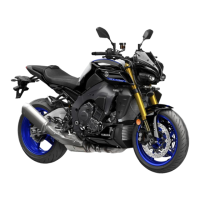

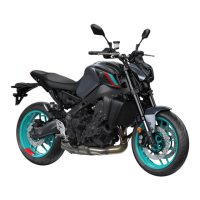


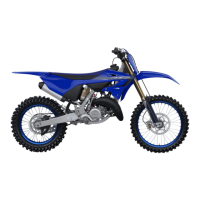
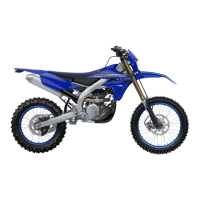
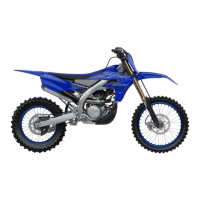

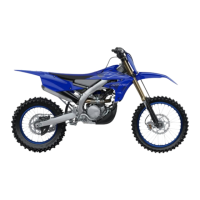


